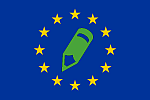European Union counting Lyme disease
The Union prevention, preparedness and response plan plans counting of zoonoses including Lyme disease.
It implements a regulation (law with mandatory value).
https://health.ec.europa.eu/health-security-and-infectious-diseases/preparedness-and-response-planning_en#the-union-prevention-preparedness-and-response-plan
This text refers to the webinar by DG SANTE(health)
https://health.ec.europa.eu/events/union-prevention-preparedness-and-response-plan-2025-02-28_en
Union prevention, preparedness and response plan
Promoting effective and coordinated response to cross-border threats to health, health crises and pandemics at EU level
Friday 28 February 2025, 10:00 - 11:30 (CET)
Spoken version
Written version
How (not) to count
Spoken version
EuroLyme discussed the need of realistic diagnosis and an accurate counting of Lyme disease patients
with Kathleen Funchion and Lynn Boylan.
Their parliamentary written question in 2025 asks
adequate diagnostics and data collection on Lyme disease.
The answer of
a parliamentary written question made 3 years ago by Frédérique Ries
refers to a counting of Lyme Neuroborreliosis cases.
In 2023, less than 2000 cases were reported.
But already the European Parliament resolution of 15 November 2018 on Lyme disease
motivates that Lyme disease is still underdiagnosed and appropriate diagnostic tests are absent.
In the regulation on serious cross-border threats to health find
as first subject of the scope
threats of biological origin, consisting of:
communicable diseases, including those of zoonotic origin;
Epidemiological surveillance
including those of zoonotic origin;
The EU reference laboratories shall be responsible for
reference diagnostics, including test protocols.
It is unfortunate that 6 years after the 2018 EP resolution,
none of the research institutions and advisors who fit EU funding rules proposed an evaluation of blood tests.
EuroLyme proposes a research project on its
EuroLyme EU Petition on the Reliability of blood tests.
Spoken version
Written version
How (not) to count
Written version
EuroLyme represents European groups for Lyme disease.
https://www.eurolyme.eu/
EuroLyme and Lyme Chat - Éire discussed the need of realistic diagnosis and an accurate counting of Lyme disease patients
with Kathleen Funchion and Lynn Boylan.
Parliamentary written question E-000702/2025 by Kathleen Funchion and Lynn Boylan :
Adequate diagnostics and data collection on Lyme disease
https://www.europarl.europa.eu/doceo/document/E-10-2025-000702_EN.html
The answer of
the parliamentary written question E-000482/2022 by Frédérique Ries
Compliance by Member States with the obligation to report cases of Lyme disease
https://www.europarl.europa.eu/doceo/document/E-9-2022-000482_EN.html
https://www.europarl.europa.eu/doceo/document/E-9-2022-000482-ASW_EN.html
refers to
Survaillance Atlas of Infectious Diseases
https://atlas.ecdc.europa.eu/public/index.aspx?Dataset=27&HealthTopic=76
It makes a counting of Lyme Neuroborreliosis cases.
In 2023, less than 2000 cases were reported.
European Parliament resolution of 15 November 2018 on Lyme disease (borreliosis) (2018/2774 (RSP)).
https://www.europarl.europa.eu/doceo/document/TA-8-2018-0465_EN.html
This resolution motivates :
O whereas, although well known to medical science, Lyme disease is still underdiagnosed, in particular because of the difficulties encountered in the detection of symptoms and the absence of appropriate diagnostic tests;
P whereas the screening tests used for Lyme disease are not always able to provide accurate results, one such example being the Elisa test which only detects one infection at a time.
Regulation (EU) 2022/2371 on serious cross-border threats to health
http://eur-lex.europa.eu/eli/reg/2022/2371/oj
CHAPTER I GENERAL PROVISIONS
Article 2 Scope
1. This Regulation shall apply to public health measures in relation to the following categories of serious cross-border threats to health:
(a) threats of biological origin, consisting of:
(i) communicable diseases, including those of zoonotic origin;
CHAPTER III EPIDEMIOLOGICAL SURVEILLANCE, EU REFERENCE LABORATORIES AND AD HOC MONITORING
Article 13 Epidemiological surveillance
1. The network for the epidemiological surveillance of communicable diseases, including those of zoonotic origin, and related special health issues referred to in Article 2(1), points (a)(i) and (a)(ii), (‘the network for epidemiological surveillance’) shall ensure permanent communication between the Commission, the ECDC, and the competent authorities responsible at national level for epidemiological surveillance.
Article 15 EU reference laboratories
2. The EU reference laboratories shall be responsible for coordinating the network of national reference laboratories, in particular, in the following areas:
(a) reference diagnostics, including test protocols.
Commission Implementing Regulation (EU) 2024/892
designating European Union reference laboratories for certain specific areas of public health
https://eur-lex.europa.eu/eli/reg/2024/892/oj
ANNEX IV
THE EU REFERENCE LABORATORY FOR PUBLIC HEALTH ON HIGH RISK, EMERGING AND ZOONOTIC BACTERIAL PATHOGENS, ITS RESPONSIBILITIES AND TASKS
1. THE CONSORTIUM DESIGNATED AS THE EU REFERENCE LABORATORY FOR PUBLIC HEALTH ON HIGH RISK, EMERGING AND ZOONOTIC BACTERIAL PATHOGENS
2. RESPONSIBILITIES AND TASKS
This includes high risk, emerging and zoonotic bacterial diseases (such as anthrax, brucellosis, glanders, leptospirosis, Lyme borreliosis, melioidosis, plague, Q fever, rickettsiosis and tularaemia).
It is unfortunate that 6 years after the 2018 EP resolution,
none of the research institutions and advisors who fit EU funding rules proposed an evaluation of blood tests.
EuroLyme proposes a research project on its
EuroLyme EU Petition.
http://www.lymeplus.com
https://www.europarl.europa.eu/petitions/en/petition/content/0986%252F2023/html/Petition-No-0986%252F2023-by-John-Vandeput-%2528Belgian%2529%252C-on-behalf-of-EuroLyme%252C-on-reliable-blood-tests-for-Lyme-disease
Spoken version
Written version
How (not) to count
How (not) to count
The European Parliament resolution of 15 November 2018 on Lyme disease (borreliosis) (2018/2774 (RSP)) motivates
that the medical profession often follows outdated recommendations on Lyme disease that do not take sufficient account of research developments
and that, although well known to medical science, Lyme disease is still underdiagnosed, in particular because of the difficulties encountered in the detection of symptoms and the absence of appropriate diagnostic tests.
https://www.europarl.europa.eu/doceo/document/TA-8-2018-0465_EN.html
ECDC used a document describing of some aspects of Lyme disease.
This (mis)leads to the following regrettable numbers.
Survaillance Atlas of Infectious Diseases
https://atlas.ecdc.europa.eu/public/index.aspx?Dataset=27&HealthTopic=76
The following 2023 document shows a failed attempt to count Lyme disease infected persons.
Their final proposal is count only patients with rare severe visible symptoms.
The document does not even propose to count all infected persons.
The Landscape of Lyme Borreliosis Surveillance in Europe
Archana Nagarajan, Jozica Skufca, Andrew Vyse, Andreas Pilz, Elizabeth Begier, Margarita Riera-Montes, Bradford D. Gessner, and James H. Stark
https://www.researchgate.net/publication/370103869_The_Landscape_of_Lyme_Borreliosis_Surveillance_in_Europe/fulltext/644034811b8d044c6335d5fa/The-Landscape-of-Lyme-Borreliosis-Surveillance-in-Europe.pdf
It is a challenge to give a good estimation of infected persons.
For Europe we include 9 borrelia species.
All blood tests proposed for the EuroLyme EU PETItion blood test comparison research proposal have evolved since 2018.
The transcript of the EuroLyme EU PETItion Presentation
to the European Parliament’s PETI Committee (Petitions)
https://www.eurolyme.eu/index.php/en/proposals/petition-presentation
Spoken version
Written version
How (not) to count



